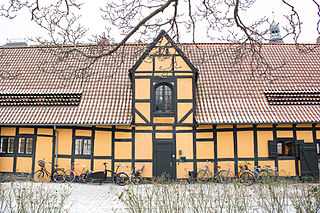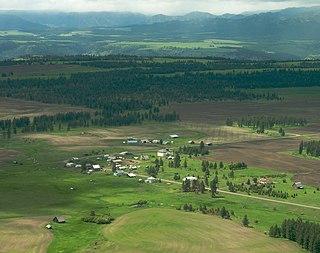In mathematics, a Mersenne prime is a prime number that is one less than a power of two. That is, it is a prime number of the form Mn = 2n − 1 for some integer n. They are named after Marin Mersenne, a French Minim friar, who studied them in the early 17th century.
In number theory, a prime number p is a Sophie Germain prime if 2p + 1 is also prime. The number 2p + 1 associated with a Sophie Germain prime is called a safe prime. For example, 11 is a Sophie Germain prime and 2 × 11 + 1 = 23 is its associated safe prime. Sophie Germain primes are named after French mathematician Sophie Germain, who used them in her investigations of Fermat's Last Theorem. Sophie Germain primes and safe primes have applications in public key cryptography and primality testing. It has been conjectured that there are infinitely many Sophie Germain primes, but this remains unproven.

The IAS machine was the first electronic computer to be built at the Institute for Advanced Study (IAS) in Princeton, New Jersey. It is sometimes called the von Neumann machine, since the paper describing its design was edited by John von Neumann, a mathematics professor at both Princeton University and IAS. The computer was built from late 1945 until 1951 under his direction. The general organization is called Von Neumann architecture, even though it was both conceived and implemented by others. The computer is in the collection of the Smithsonian National Museum of American History but is not currently on display.
In number theory, Skewes's number is any of several extremely large numbers used by the South African mathematician Stanley Skewes as upper bounds for the smallest natural number for which
In mathematics, a quasiperfect number is a natural number n for which the sum of all its divisors is equal to 2n + 1. Equivalently, n is the sum of its non-trivial divisors. No quasiperfect numbers have been found so far.

In mathematics, an almost perfect number (sometimes also called slightly defective or least deficientnumber) is a natural number n such that the sum of all divisors of n (the sum-of-divisors function σ(n)) is equal to 2n − 1, the sum of all proper divisors of n, s(n) = σ(n) − n, then being equal to n − 1. The only known almost perfect numbers are powers of 2 with non-negative exponents (sequence A000079 in the OEIS). Therefore the only known odd almost perfect number is 20 = 1, and the only known even almost perfect numbers are those of the form 2k for some positive number k; however, it has not been shown that all almost perfect numbers are of this form. It is known that an odd almost perfect number greater than 1 would have at least six prime factors.
In number theory, a Wieferich prime is a prime number p such that p2 divides 2p − 1 − 1, therefore connecting these primes with Fermat's little theorem, which states that every odd prime p divides 2p − 1 − 1. Wieferich primes were first described by Arthur Wieferich in 1909 in works pertaining to Fermat's last theorem, at which time both of Fermat's theorems were already well known to mathematicians.
A Wilson prime, named after English mathematician John Wilson, is a prime number p such that p2 divides (p − 1)! + 1, where "!" denotes the factorial function; compare this with Wilson's theorem, which states that every prime p divides (p − 1)! + 1.

Abramowitz and Stegun (AS) is the informal name of a mathematical reference work edited by Milton Abramowitz and Irene Stegun of the United States National Bureau of Standards (NBS), now the National Institute of Standards and Technology (NIST). Its full title is Handbook of Mathematical Functions with Formulas, Graphs, and Mathematical Tables. A digital successor to the Handbook was released as the "Digital Library of Mathematical Functions" (DLMF) on May 11, 2010, along with a printed version, the NIST Handbook of Mathematical Functions, published by Cambridge University Press.
Søren Kierkegaard Research Center at the University of Copenhagen in Denmark is an independent foundation headed by Dr. Niels Jørgen Cappelørn, and is dedicated to the research and promotion of 19th-century philosopher, Søren Kierkegaard.
The Danish Cultural Institute promotes cultural exchanges between Denmark and the rest of the world. It supports projects aimed at long-term cooperation between foreign and Danish cultural institutions, artists and other professionals. The current Secretary General is Camilla Mordhorst.
Lakeland is a neighborhood of Louisville, Kentucky located along LaGrange Road near Central State Hospital and Keeneland, Lyndon, Kentucky.

Danish Design Centre is an independent, government-funded organization established in 1978. The role of DDC is to act as a knowledge centre for Danish businesses in matters of design, to facilitate maintaining and furthering the Danish design tradition. DDC works in close cooperation with designers, partners, sponsors, businesses and audiences both nationally and internationally. The Danish Design Centre doesn't have exhibitions or other facilities open to the general public for the time being.

Transcription factor SOX-5 is a protein that in humans is encoded by the SOX5 gene.
Qidong is a L/LL5-an chondrite meteorite fallen in 1982 in China. After detonation a single individual specimen was found in the field. Other circumstances of fall and recovery were not reported.

Kowalewo is a village in the administrative district of Gmina Wiśniewo, within Mława County, Masovian Voivodeship, in east-central Poland. It lies approximately 8 kilometres (5 mi) south-west of Wiśniewo, 13 km (8 mi) south-west of Mława, and 102 km (63 mi) north-west of Warsaw.

Piasek is a village in the administrative district of Gmina Górowo Iławeckie, within Bartoszyce County, Warmian-Masurian Voivodeship, in northern Poland, close to the border with the Kaliningrad Oblast of Russia. It lies approximately 9 kilometres (6 mi) east of Górowo Iławeckie, 13 km (8 mi) west of Bartoszyce, and 55 km (34 mi) north of the regional capital Olsztyn.
Khawlan District is a district of the Sana'a Governorate, Yemen. As of 2003, the district had a population of 28,925 inhabitants.

Papyrus Oxyrhynchus 16 is a fragment of the fourth book of the History of the Peloponnesian War by Thucydides in Greek. It was discovered by Grenfell and Hunt in 1897 in Oxyrhynchus. The fragment is dated to the first century. It is housed in the University of Pennsylvania Museum. The text was published by Grenfell and Hunt in 1898.
Kharkiv Regional College of Physical Culture and Sports also known as OUFK or KhOVUFKS is a sports college in Kharkiv that provides sports reserve for Olympic sports and is subordinated to the Kharkiv city council. Note that in Kharkiv are two colleges of Physical Culture, one belongs to the Kharkiv Oblast, another is administered directly by the Government of Ukraine through the Ministry of Sports.









